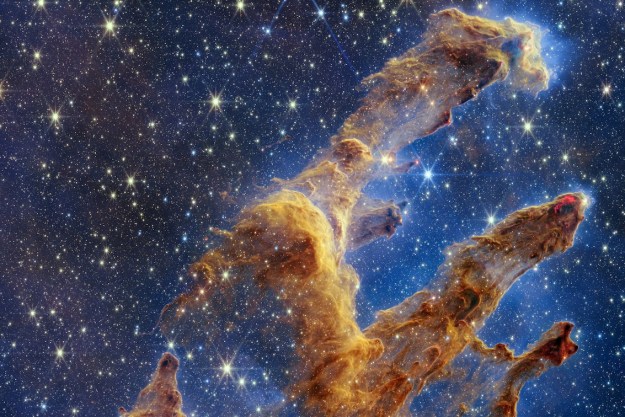To contribute to the world’s galaxy-sweeping search for signs of alien life, the Chinese Astronomical Society is nearing completion of what will soon be the largest radio telescope on Earth. After spending the better part of the last four years constructing and assembling the massive dish, Chinese officials now estimate completion of the project to occur around September of 2016.
For an up close and personal glimpse of the project’s progress, China Central Television Station recently released astonishing drone footage (posted above) of its ongoing development and intended use once it’s finished.
Officially titled the Five-Hundred-Meter Aperture Spherical Telescope (or FAST), China’s new toy will reportedly boast the ability to detect radio signals from billions of light years away. According to the official paper published on the project, FAST also has the capacity to identify new galaxies, extrasolar planets, and highly magnetic neutron stars, or pulsars. The combination of its entire skill set, China hopes, will allow it to uncover a bevy of secrets pertaining to Earth’s evolution, and the evolution of our universe.
At 500 meters, the FAST telescope plans to overtake the current record holder — Puerto Rico’s Arecibo Observatory — by an astounding 200 meters. According to Chinese officials, the finished project will be comprised of 4,600 triangular panels fixed to the larger structure via a series of cables capable of moving each panel when necessary. When in use, FAST’s active main reflector corrects for any spherical irregularities to maintain full polarization. The dish also figures to overtake the Arecibo Observatory in sensitivity, of which officials estimate it will be three times more sensitive.
While surveying land in order to find a proper place for the enormous telescope, China knew the most practical way to go about production would be to make use of existing land depressions. Because of this, the construction site for FAST broke ground in Guizhou Province in a large karst valley inside the Dawodang depression. Over the course of 17 years, China undertook many site surveying projects while looking for the perfect location. Roughly 400 land depressions were analyzed before the Dawodang depression was selected as the most desirable spot.
“Having a more sensitive telescope, we can receive weaker and more distant radio messages,” says China Astronomical Society Director General Wu Xiangping. “It will help us to search for intelligent life outside of the galaxy and explore the origins of the universe.”
With September of 2016 just around the corner, the world won’t have to wait long to get a complete look at FAST’s operating power and to have a better understanding of just how capable it is of acquiring new knowledge, and advancing the search for alien life.
Editors' Recommendations
- Check out Wing’s largest delivery drone yet
- James Webb telescope captures stunning view of a famous supernova remnant
- Check out these stunning images of SpaceX’s recent Starship test
- See a stunning field of galaxies captured by James Webb Space Telescope
- New radio telescope seeks to discover if we are alone in the universe




